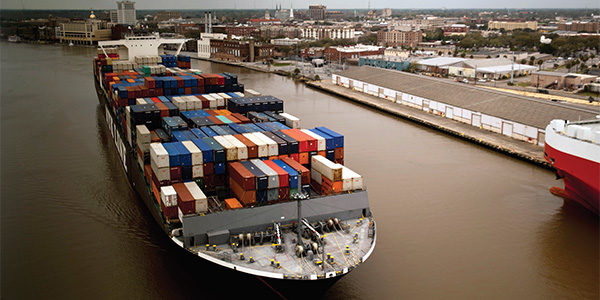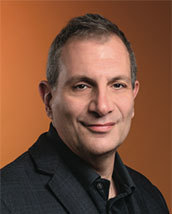Shallow waters, deep legacy: interview with Curtis J. Foltz

Up-and-coming port operations executives could do far worse than plying their trade under the wing of Curtis J. Foltz. Under his leadership, the Georgia ports of Savannah and Brunswick played the cards that Mother Nature dealt—namely, a shallow 42-foot channel draft—and won the hand. The Savannah container port has prospered on the back of a superb logistics infrastructure and what many users regard as superior customer service that treated stakeholders like, well, stakeholders. Its Garden City Terminal has become the country's fourth-busiest container facility and the busiest single-terminal operation in the U.S. It has the largest cluster of import distribution centers on the East Coast, on-deck access to the large Eastern railroads CSX Corp. and Norfolk Southern Corp., and the advantages of close proximity to Interstate 95, running north to south, and I-16, running east to west. Savannah is the country's second-largest export container port, exceeded only by the Port of Los Angeles.
"Perhaps Curtis's greatest contribution was to serve, and bring together, all his diverse constituencies so well—shippers, carriers, BCOs [beneficial cargo owners], labor, Georgians, and for that matter, the whole region," said Mark Q. Holifield, executive vice president, product development & supply chain for The Home Depot Inc., the Atlanta-based home improvement giant, and a big user of Savannah. Under Foltz's leadership, Georgia's ports established a level of "operating excellence that stands as a model" for how all ports should do business, Holifield said.
Foltz leaves the Georgia Ports Authority (GPA), which owns and operates both ports, on June 30 after 12 years, six as executive director and six as chief operating officer. In mid-February, Foltz spoke with Mark B. Solomon, executive editor-news, about the changes in his industry, the need for the ports to get to 47-foot drafts as soon as possible, and what lies in store for the supply chain after he leaves the scene, albeit temporarily. (Note: The interview has been edited for brevity.)

Q: Was there ever a point in your tenure that you thought the shallow draft was a liability for you?
A: I never saw it as a liability. Unfortunately, it's the one thing we don't control, and it's not a strength of ours. We have so many other strengths that we've been able to overcome that shortfall. But it's clear that something needs to be addressed. Whether it translates into a carrier that has to wait for high tide to enter our facility, or a vessel being unable to load as many containers because the vessel has already reached maximum depth, the shallow depth raises our costs and lessens our competitiveness in export markets. Once the deepening is completed [it is expected in 2017], it will take away the one box, that if you had a list of boxes, would have a red "X" in it.
Q: What is your view of the impact of the scheduled July 1 implementation of an amendment in the Safety of Lives at Sea (SOLAS) treaty that requires shippers to certify the total mass of a container before it is loaded aboard a vessel?
A: I discount any regional competitive consequences from the SOLAS provision. It will hopefully not be selective in its administration, so I don't think any region will benefit at the expense of another. From where we sit, however, it is crystal clear who has the sole responsibility for declaring the weight, and that's the shipper. They know the weight of the cargo, they know the dimensions of the cargo, they are responsible for accurately reporting that information to the authorities, and they are responsible for any liability that may occur.
Q: Even if they do not own or control the equipment?
A: It doesn't matter. You find me a shipper that doesn't know what they're putting into the container, and what the density and weight of the shipment is, and that person shouldn't be shipping goods.
Q: How do container lines go about getting their financial houses in order?
A: I was in the liner business for Sea-Land and its affiliates for 20 years. It's been a challenge for the past 30 years. What I do know is that there is not, and has not been, a reasonable rate of return for liner companies. It is not sustainable, and it is not good for anyone. Whether you blame the oversupply, the tepid demand, or unprofitable pricing, the entire system will break down in the not-too-distant future if the issue is not addressed.
There is no silver bullet that will work here. It's all about finding a way to get rate stability. First and foremost, liners need to stop ordering tonnage for a while. They also need to lay up tonnage on the lanes where they are not getting at least 90 percent utilization. Carriers also need to be more disciplined in working with their conference affiliations and should insist on long-term contracts that lend themselves to more rational pricing. Today, the average contract duration is one year, and sometimes it's less than that.
Q: You took over the executive director's position after serving as COO. Your successor, Griff Lynch, is the current COO. Can someone run a port without deep operational experience in the industry?
A: You have to distinguish between operating ports and "landlord" ports [where the port owns the infrastructure but rents out its facilities to terminal operators]. At operating ports, of which there are four—ourselves, Charleston, Virginia, and Houston—you need the skill sets of people who've been in the business for a considerable period of time. You need people with extensive liner shipping experience, and who understand and have run container facilities. The four ports I mentioned are all run by executives who have that depth and scope of expertise. At the landlord ports, that level of expertise is not as critical.
Q: As the 2014-15 labor-management dispute on the West Coast reached fever pitch and large amounts of freight were being diverted to the East and Gulf coasts, was there a point where you became concerned that Savannah had reached the limits of its ability to handle the new business and still run its operation?
A: Everything has its limits, but you don't know what those limits are until they're tested. We saw a tsunami of diverted and incremental shipments headed to the East Coast and the Gulf. We've never handled anything like that before. On a normal day, we handle an average of 42,000 containers. At the peak [of the labor crisis], we had spiked to 60,000 containers a day. I was proud of how we survived the test. I think "concerned" is too strong a word, but we were aware of what was going on and actively planning for it on a daily basis.
Q: How would you characterize relations with the International Longshoremen's Association (ILA)?
A: With us here, they're outstanding.
Q: In your view, as you look around the port network, what are the main issues that ports need to put at the top of their priority list to make productivity improvements sustainable?
A: On the sea side, we all need to invest in newer and larger container-handling equipment, so we can more efficiently turn the vessels. The second part is to improve the velocity of the trucker turn times at our terminals. That's something we could all improve upon and need to stay focused on. It is a part of our industry that's in serious need of attention.
Q: Does the introduction of megavessels (ships over 10,000 twenty-foot equivalent unit, or TEU, capacity) put ports in a more difficult position, with essentially having to live with whatever the steamship lines bring them?
A: Other than water depth and the issues involved in working around it, fewer and larger ships play to our advantage because of the scalability of our terminal. As you look around the U.S., however, the ships are causing pretty severe challenges at ports that have multiple or smaller proprietary terminals and are not set up to handle the increased throughput and the large surges.
I hear noise in the industry as to how quickly the issue has become front and center. But this has been a discussion for five to six years. I think it's true that the big ships came on a bit faster than we expected. But for those who weren't preparing for it five years ago, I blame them more than I blame the ocean carriers.
Q: Do you see yourself running another port?
A: I don't see myself running another port. I came here for a lot of reasons. Georgia gets it right, and it was an honor and pleasure to be here for 12 years. My expectation is that I will go back to the private sector side, and that's where I will spend the rest of my career.
Related Articles

Copyright ©2024. All Rights ReservedDesign, CMS, Hosting & Web Development :: ePublishing